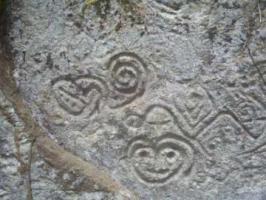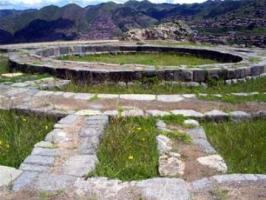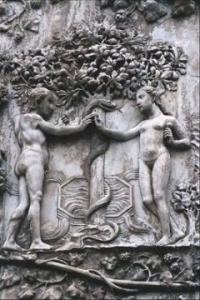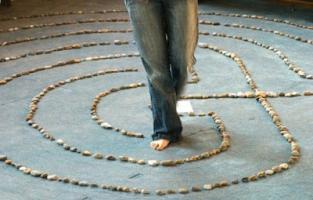Copy Link
Add to Bookmark
Report
Zine 03

.
. . x .xX
welcome to x X XxX .xxxxxX
.xXX XX XxX xxxxxxx
XXXXXXXXXXXXX .. XxX .XXX XXX x
xXXXX XXXXXX xx XXXX xXXX XXX ¸
XXXXX XxXXX xXXX XX
XXXXX ¸ XX XxXXXXxXXX XXXXx
XXXXX X XX XXXxXXxXXX XXXxxx.
XXXXXXXXXX XX XXX XxXXXXxXXX XXX
XXXXXXXXXXXXXXX XXX XXX XXXXX XXX ¸
$$$$$$$$XXXXXXX X XXX XXXX XXX x
$$ $$$$$$$ $ x XXx XXX XX
` ' ` x XXXXXXX
' XXXxXxXxXxX ` .xXXXXX
' XX XxX$ . XXX
' XXX$ x
' .xxXX$ ' `
xXxX$. '
' XxX$
x XXX$
xx XxX$
$xXxXxXxXx$
'$$$$$$$$$ ¡ascii concepts by c0rr
+*¤*¤*¤*¤*¤*¤*¤*¤*¤*¤*¤*¤*¤*¤*¤*¤*¤*¤*¤*¤*¤*¤*¤*¤*¤*¤*¤*¤*¤*¤*¤*¤*¤*¤*¤*¤*¤*¤*+
° °
° . . . T a b l e o f C o n t e n t s °
° °
+**¤*¤*¤*¤*¤*¤*¤*¤*¤*¤*¤*¤*¤*¤*¤*¤*¤*¤*¤*¤*¤*¤*¤*¤*¤*¤*¤*¤*¤*¤*¤*¤*¤*¤*¤*¤*¤*¤+
-- Introduction = by: ruiner --
-- _carbon_'s Intro = by: _carbon_ (imagine that) --
Tech Articles
-- The "Parsable Telephone Scan" format = by: prez --
-- An Argument for the Linux GUI = by: doc --
-- Hiding from ECM using 09 = by: _carbon_ --
-- High speed telco data lines primer = by: larsu --
-- Basic encryption - 1 = by: orez --
-- "Crypto stuph" = by: c0rr --
-- Bell Canada VMB Insecurity = by: Prez --
-- The Echelon "Myth" Exposed = by: c0rr --
-- Findlay, Ohio Walmart PBX Extensions = by: ruiner --
-- The 419 Report = by: the Amerisuk Crew (ok, Admin-x-, doc, and ruiner)
-- The end of 419 as we know it = by: Admin-X- --
Who the fuck are we? Who cares?
-- Members --
-- Other People --
-- Shoutouts --
Contact: www.amerisuk.com -- emails and shit are there on the members page.
you're smart,you'll find them
-------------------------------------------------------------------------------
-- Introduction = by: ruiner --
-------------------------------------------------------------------------------
Welcome, gentle readers, to Zine 3, brought to you by Amerisuk Communications.
This is ruiner, and I will be chief editor for this issue (As if you knew who I
am, or even cared, for that matter.) That means that I'm the one responsible
for most if not all of the annoying smartass comments throughout the zine. A
few of you may find them amusing, maybe. Probably not. I am also responsible
for spelling and grammer checking, as I am reasonably good at it, and I feel
that it is necessary to not put forth the impression that Amerisuk is simply a
group of slack-jawed yokels who cannot spell. Releasing any medium of spreading
knowledge that is filled with typos and incorrect grammar really does nothing
apart from making the offending group seem sloppy and/or fucking stupid. And I
assure you, any typos or misspellings are INTENTIONAL! (heh heh heh)
But anyway, we here at Amerisuk would like to offer a sincere apology for
Zine 2. Unfortunately, there was some shit going on with the group, personal
problems, which caused some people to not submit articles on time, or not at
all. As a result, the issue was certainly not up to par with what we had hoped
to achieve. However, my article, in my infallible biased opinion, is certainly
of the same quality as all of my writing. This may sound narcissistic of me,
but I did not actually imply that my writing is good, simply consistent.
Anyway, we hope this issue is much more technical and enjoyable than the
previous one. And, again, we are very very sorry for Zine 2, and we promise
never to release anything so pitiful a second time. So, enjoy Zine 3!
-- ruiner
-------------------------------------------------------------------------------
-- Carbon's Intro --
-------------------------------------------------------------------------------
I would like to take this time to talk about the recent DoS attacks and the
media's "claims". It seems apparent to amerisuk that the government has
taken it upon themselves to use this situation and to scare people into
accepting martial law on the internet. At the same time it seems as though
many hackers are pointing fingers to other hackers and questioning their
abilities and passions with the relevance of their age. I'm not going to
speak on the government and it's exploitation of the people since it is
pretty much the same old story. However, I assure you that hackers blaming
hackers is very disturbing. I find the age of someone interested in hacking
or security very irrelevant. Who is to define 'what a hacker is'?
Not everyone had the luxury or resources to start when the term 'old school'
was born. To shun a newcomer only because you feel that they will never compare
to you or because the less people that learn, the more eleet you are is not
what it is about. Without someone to pass the ethics to, the underground will
become no more than a faded rebellious trend. To say that some 'kid' pulled
off these attacks is as absurd as the media stating that it was hackers.
The hackers who feel this way must remember, you began somewhere too.
It is your own self-centeredness that has blinded you.
*****
Zine wasnt meant to be a rip off of Phrack or any other great and well
known zine. Zine is for anyone with an interesting article or view that can
reach out to others. If you're well known in the computer world, or just an
average irc'er, it doesnt matter. We are looking for good content, knowledge,
and expressive material. This is a zine for the people by the people.
Later
-carbon
carbon_baked
-------------------------------------------------------------------------------
***************
Articles
***************
-------------------------------------------------------------------------------
-- The "Parsable Telephone Scan" format = by: prez --
-------------------------------------------------------------------------------
Composed by Prez (prez@lfx.org)
Hey guys, it's prez :) Back from the dead. Over the last few weeks,
I've taken some time to get some stuff done. Me and the locals have
been doing a lot of our own stuff, but mainly, we've been drawing a
'map' of our local area via scanning. While doing this, we kinda
made up a "standard format" for documenting scans. After using it, we
decided that this format of documenting scans really had potential for
wider use, because of a few things:
- Parsable
The format is so easily parsable that any phreaker could write a
program/script to parse this into whatever format they like to view
their scans in.
- Ease
Documenting scans is fast and easy and you can generally fly through
numbers.
- Global
Just think, if we started documenting all our scans in a universal
scan format, the scans could be used for more than just reading, they
could be referenced by different programs and utilities for whatever
information they need.
Anyways.. the format is a lot like ASM code, where you have an "address",
"instruction", and arguments. A normal line of a scan would look something
like this.. .
1201 RES
or
0317 CORP "Sheprod K-9 Security"
. ..As you can see, you have:
- the "address", the number
- the "instruction", the type of find
- the "arguments", any additional information
Now, lets just run over all the types of finds you can have, and this
definitely doesn't cover everything out there.. I'll explain in a second about
these, and any arguments they can have.
ERR Error
RES Residential line
CORP Business of any kind
FAX Fax machine
RING Unanswered
AUTO Automated System
DESC Any number needing explanation
%%%% Odd or unexplainable, this is what we're looking for;)
Heh, this is where this turns into a man page :P
ERR [error number]
Okay, these are the set of errors that the Telco has, you know the ones,
"the number you have reached is out of service.." or the type. These are
predefined at the top of a scan, I'll explain this later when I show you
an example. ANOTHER NOTE: XX is going to be the "Number changed to.."
error, this is be standard so that they can read argument's properly,
as a line changed should look something like:
1794 ERR XX 519-448-4794
Make sure the number has no spaces in it.. :)
RES [*]
Residential, * can be any additional information about the line.
CORP [name]
Business of any kind.. if they sell, they are CORP :) Now, [name] is
just that, the name of the business.. if you could hear it.
PAY [*]
If you have a definite way of telling if a line is a payphone (sometimes
there are "outgoing calls only" messages), feel free to use this.. * is
your comment, perhaps "This line accepts incoming calls"..
FAX [*]
Just that, a fax. * is any additional information.
RING
Okay, RING is usally just used when you don't get an answer, this can
mean someone isn't home or whatever.. The parsing program I'm working on
can be set to output these, just so you know which ones you should re-dial
later.
AUTO [*]
Heh, ANY automated system. If it takes DTMF for menus, it's automated.
Automated systems do not include Home Answering Machines that don't take
DTMF input, those are RES/CORP. AUTO can override use of RES/CORP depending
on if it takes DTMF/Voice for input, I guess you just have to use your
judgement. * is any explanation.
DESC [*]
If there is something about this line that really needs explaining, use
this. * is your description.
%%%% [*]
Heh, I've only used this twice. These are numbers that are one of a few
things: Unexplainable, Really REALLY dope, or something really special. * is
your explaination of the number, and any advice for people that are going to
call it. A good example is:
0297 %%%% Unused VMB..
This is odd because the first thing you do when you get Bell Call Answering is
set it up.. If you guys remember a certain VMB I had for awhile, this was the
exact situation.
0315 %%%% "LP Dispatch"
Local Police Dispatch, need I explain this?
Now, for your example file.. With a few comments (##'s are excluded from any
actual scans):
905 387 ## the area code and exchange your scanning
{ ## inside the {}'s you can define your error messages
00 "We're sorry, your call can not be completed as dialed.."
01 "We're sorry, the number you have reached is not in service.."
02 "Bell Canada, There is no service at (number), I repeat.."
}
0001 RES
0002 CORP "Boomer's Strip-club"
0003 RES
0004 ERR 02
0005 ERR
0006 DESC Tones, then pulse, then disconnects.
0007 %%%% There is a dialtone, and you can dial out local!
0008 BUSY
0009 AUTO Voicemail system for Hamilton Spectator
0010 PAYF
Heh, you get the idea, right? Anyways, anyone that is going to make a parsing
script for this format, keep one thing in mind. Expandability. There may be a
lot of things I didn't include that are so common they should have their own
'code'. Make sure your program can handle unexpected codes (you know, without
crashing), in case new things are incorporated into the "standard".
If you guys have any feedback or suggestions for the Parsable Telephone Scan
format, please drop me a line.. My contact information (email, irc, ptsn) is
below.
The top of it, to all my boys at Amerisuk :)
Peace,
Prez prez@lfx.org
prez_ on efnet
905-312-0297
-------------------------------------------------------------------------------
-- An Argument for the Linux GUI = by: doc --
-------------------------------------------------------------------------------
I've been sitting around wondering a few things. I'm not an expert by any
stretch of the imagination on the subject of computer graphics. I do
believe that I have some valid suggestions and possibilities for a GUI
environment running with a UNIX flavored operating system.
It is my opinion that X has soured a super stable kernel. Also, the
instability of an operating system (i.e. Windows 95) that has the word
window at the root of the name of the operating system has caused hard
core computer enthusiasts to question the validity of a graphical file
manipulation tool/graphical display tool. Another reason (the best counter
argument that I would agree with) is that the end luser may not totally
understand the actual process that is occurring when he/she manipulates a
file. I however, will make a bold statement. Graphical manipulation can be
your friend!
Here is why. Number one, some people are graphically oriented learners,
just as others learn by hearing, and others by doing. Ignoring the
possibility that those with such talents could increase there productivity
by a graphical shell is wasteful. Number two, putting a black eye on GUI's
in general has led to the belief that all graphics are evil. I say that
seeing a jpeg of something may explain a complex idea much easier than
1000 lines of text. Number three, humans spend more time manipulating
objects in a graphical world than they do concepts that are totally
textually based. Therefore, is it wise to ignore the trait that has been
taught to us from birth? This concept is sometimes labeled under the topic
integration of humans and computers. (Of course, when VR becomes available,
we can manipulate objects visually, tactually, orally, with smell and
hearing.)
OK, doc, these seem like a few wonderful reasons that might mean that
graphics aren't totally evil. Now, what do we do to integrate this with my
favorite UNIX flavor? I'm glad you asked.
Number one premise, this should all work over a network connection, just
like X is "supposed" to do. An luser should be able to sit down in front
of a thin client or xterm and be able to see the desktop originating from
the server.
Number two, basic shapes that need to be drawn will be held in memory on
the client side. (For clarification, the server/client paradigm is not the
sick, twisted MIT logic of X. Rather, I refer to that which commands are
issues by the luser, or client, and the server is the large, stoic
computer that sits in a corner processing millions of requests for junk
email and quake 2 games.) These shapes can be mathematically combined and
end up meaning the intended shape. This shape can be represented by the
coordinates of where the objects vertices should be, and any other
specific information required by the computer. This could be a special
graphic that is outside of the normal set of shapes sitting on the client
side. A compressed (and hopefully low-res) graphic could be sent and told
to exist within a specified coordinate.
My third idea is that it must be able to work with the kernel, and be able
to manipulate files graphically the same way that files are handled
textually in say, bash, for example. The guru mantra of, "everything in
UNIX is a file!" must be held as a fundamental design belief.
Number four relies on some simple ideas that I had when playing a legacy
DOS game. It also is sort of like what you run into if you have ever used
edit.exe in your life. How about this. The GUI could be simple ASCII and
ANSI characters. If some graphic needed to be displayed, it could be
loaded in a separate window, or even switch screens. It could take normal
mouse commands, much like edit.com does.
Much could be done in addition to all of the ideas presented here. Basically
I intend to get ideas stirring in the minds of UNIX lovers. Just because
GUI's have been typically unstable shells, doesn't mean that we should give
up on the concept it self. We should see it as a challenge to rise above,
and create.
-- doc
-------------------------------------------------------------------------------
-- Hiding from ECM using 09 = by: _carbon_ --
-------------------------------------------------------------------------------
*Penalties for the possession of "test cards" or programmers is $10,000 and up,
so dont be stupid... please dont cry to us, it's not our responsibility*
Smart Cards are commonly found in DTV (Direct TV) units. The two types of cards
that are focused upon are H and HU (upgrade) cards. At this moment only H
cards can be reprogrammed do to the "encryption" of the HU, but this will come
to an end soon. In normal circumstances, once a modified card is detected, dtv
will loop you. They simply send an ECM packet, which is treated just like an
update and basically makes the card unusable.
H cards however, have what is called a 09 command security flaw. When a 09
command is received, it is used to determine what key (encryption) will be used
to authenticate the incoming data. The ASIC (hardware on card) will then start
calculating what the the real validated signature should look like and then the
key goes through the algorithm. When/if the card is changed do to the incoming
data, it is buffered for later processing. Once the signature command is
received it is compared to the calculated validation signature...if all goes
well, all buffered commands are executed with no problems.
With this said, you may see how easy it would be to send a valid 09 followed by
a desired command, another 09, and then following that with a known public
signature for a message containing nothing. What happens is, the ASIC is
initialized because of the first 09, the desired commands are buffered, and the
ASIC is hit with another 09 that causes it to reinitialize. It then analyzes
the empty data, which is valid and releases the buffered data that was stored
after our first 09 command.
Now depending who you are you may want to program this yourself, or you may
want to get a script that does it automatically like Stealth. I find that 3M
works the best.... Can you use a script without changes using 3M? YES. Do I
recommend it? NO. You must remember that if you make/modify a 3M there is less
chance for dtv to be able to loop you because your 3M code doesnt match theirs.
*It is important not to give out your private 3M!*
In the next issue I will finish teaching you how to reprogram the H card, for
educational purpose only...of course :) If you cant wait, I suggest just
looking it up on irc or the web. Until then....
-later
carbon
-------------------------------------------------------------------------------
-- High speed telco data lines primer = by: larsu --
-------------------------------------------------------------------------------
Telco data lines are used for many things, by telcos themselves as
interexchange trunks, by ISP's as backbone connections to upstream
providers or NAPs, and by companies to connect satallite offices to
headquarters. These lines are dedicated point to point links (with a
telco CO or two in the middle). Thus, they don't have phone numbers or
what not. They're just connected all the time to one location.
Anyhow, you might end up doing something where some info on these lines
might be handy. Perhaps SE'ing an IS person into fucking with their CSU
and watching their network connection go down. Or perhaps not.
DS0 - aka 56k/64k dedicated circuit
This is the smallest line size that really matters. Telcos say you can
purchase smaller lines, but I've never seen one. DS0's are either 56kbps
or 64kbps digital data lines, depending whether it's provisioned for
in-band or out-of-band signalling.
A DS0 is generally delivered to the customer's demarc as a pair of wires
marked on their gateway box with red plastic locking caps, which run out
to a RJ11 (4 wire telco plug) beige wall wart. Telcos mark the wall wort
with various Do Not Disturb messages, and with a circuit ID #. Ameritech
uses circuit ID numbers in the form IBZD################### (20 or so
digits).
The customer then hooks a small DS0 capable CSU/DSU (most are about the
same size as external modems). These CSU's are programmable for
different options, such as in-band or out-of-band signalling, normally
through a set of dip switches on the bottom or the back of the unit. DS0
CSU's usually just have an RS-232 serial port, which would either connect
to a router, or a computer, depending on the application. If connected to
a router, it could be used to link two networks together, or perhaps as a
dedicated internet link for a small office. If connected to a serial port
of a unix box, it could be used as a ppp link, or for providing remote
terminals.
DS1 - aka T1
This is a very common dedicated line. It can transmit up to 1.544 Mbps
when provisioned as a full, clear channel (out of band
signalling) DS1. it is equivalant to 24 DS0's. Single DS1s are delivered
to customer premises using 2 copper pairs, covered with red plastic
locking caps in the customers gateway. This then goes over shielded
twisted pair cabling to a device called a smartjack. This is still on the
telco's side of the demarcation point. The smartjack is a self powered
termination device a little larger than a deck of cards. When telco's
install these, they put them in a rackmount chassis that holds about 5 of
them. They have a few status LED's on them to alert things like link
failure, etc.
DS1's then connect from the smartjack to either a separate
CSU, which is usually about the size of a tall external modem, or directly
into something else that performs CSU functions, like some routers, wan
cards, or modem pools. Most DS1's are privisioned for data only, but they
are also capable to transmitting voice, with 1 line per channel (24
channels total). Inteligent CSU's can break up a DS1, allowing voice and
data simulataniously.
If you ever shop around for a dedicated Internet connection, you will notice
almost all backbone providers offer fractional DS1 service. The offer this by
providing a full DS1 circuit to your premise, and then configuring their CSU
equipment to accept data on the corresponding number of circuits.
-------------------------------------------------------------------------------
-- Basic encryption - 1 = by: orez --
-------------------------------------------------------------------------------
A beginners look at the history of cryptography and
how it is used today.
-orez
Ok I was reading some things on the net to other day, and I really
haven't found and basic introductions to cryptography, and the algorithms
used. So I felt inclined to write a simple file on how cryptography works.
Since this is the first of more I plan to write, I'll just cover most of the
simple algorithms. Such as the Caesar shift aka. substitution cipher and
monoalphabetic as, as well as some polyalphabetic algorithms.
The easiest ciphter to make and break is the simple substitution cipher.
The way the substitution cipher works, is you have the normal alphabet and
the cipher alphabet. Like this:
abcdefghijklmnopqrstuvwxyz - standard alphabet
efghijklmnopqrstuvwxyzabcd - cipher alphabet
Now, the way this works is you create a message. Say this will be our
message "the come from the west". What we do is replace each letter in our
message with the corresponding letter from our cipher alphabet.
So our encrypted text would read like this:
"xli gsqi jvsq xli aiwx" see how that works? If not I'll show you
step by step real quick.
Ok the first letter of our message is "t". So we look up at our alphabet
and find the "t". Now look at the cipher alphabet and find the letter that is
right below the "t" and that is what we replace the "t" with. And then
continue the same way with all the letters. T
This was a very simple cipher. But it worked well for a while around the
15-century. But as I'm sure you can see already, it is very easily cracked.
The first thing you can look at is letter frequency. Assuming you know the
language it is written in, you can compare the frequency of the encrypted
messaged to the frequency of letters in normal words. Here is a list of the
english alphabet and the frequency they occur in letters.
Letter | percentage Letter | percentage
------------------------ -----------------------
a 8.2 n 6.7
b 1.5 o 7.5
c 2.8 p 1.9
d 4.3 q 0.1
e 12.7 r 6.0
f 2.2 s 6.3
g 2.0 t 9.1
h 6.1 u 2.8
i 7.0 v 1.0
j 0.2 w 2.4
k 0.8 x 0.2
l 4.0 y 2.0
m 2.4 z 0.1
Ok, now that you have the frequency that letters occur in the English
language lets see if you can crack a simple substitution cipher.
jazp pua aevqoz
Now that you understand how this cipher works, and understand how to crack
it, you must be thinking to yourself "how could people actually use this?"
Well, people realized that it was easy to crack. For one you know how many
letters are in each word and where the spaces are, so something had to be
done about that. People started creating new symbols instead of using just
letters. Bigger alphabets were also created using numbers and punctuation.
With all that thrown in it does make it considerably harder to crack. Still
not impossible, but harder than before. I'll show you what I mean.
say you have a normal alphabet abcdefghijklmnopqrstuvwxyz, but now add | +
} ] } = a space and the rest are just nulls (tossed in randomly to confuse
someone trying to decrypt it but don't actually represent anything.)
here is an example of an encrypted message using this technique:
"aas|jebn}kjen+ekn}nmqxz]klj lk}neko"
see how using the basic frequency method would be harder to decrypt
this message?
Oh by the way if you didn't decrypt the first message or aren't sure what
it is, it says "beat the enigma". Anyway I'm sure you all understand how
this cipher/algorithm works by now.
A more advanced encryption method is the Vigenere cipher. The strength in
using this cipher lies in using 26 distinct different cipher alphabets. Each
shifted by one letter with respect to the pervious alphabet. I'll create a
diagram that shows how this is setup.
plain- abcdefghijklmnopqrstuvwxyz
1 |bcdefghijklmnopqrstuvwxyza
2 |cdefghijklmnopqrstuvwxyzab
3 |defghijklmnopqrstuvwxyzabc
4 |efghijklmnopqrstuvwxyzabcd
5 |fghijklmnopqrstuvwxyzabcde
6 |ghijklmnopqrstuvwxyzabcdef
7 |hijklmnopqrstuvwxyzabcdefg
8 |ijklmnopqrstuvwxyzabcdefgh
9 |jklmnopqrstuvwxyzabcdefghi
10 |klmnipqrstuvwxyzabcdefghij
11 |lmnopqrstuvwxyzabcdefghijk
12 |mnopqrstuvwxyzabcdefghijkl
13 |nopqrstuvwxyzabcdefghijklm
14 |opqrstuvwxyzabcdefghijklmn
15 |pqrstuvwxyzabcdefghijklmno
16 |qrstuvwxyzabcdefghijklmnop
17 |rstuvwxyzabcdefghijklmnopq
18 |stuvwxyzabcdefghijklmnopqr
19 |tuvwxyzabcdefghijklmnopqrs
20 |uvwxyzabcdefghijklmnopqrst
21 |vwxyzabcdefghijklmnopqrstu
22 |wxyzabcdefghijklmnopqrstuv
23 |xyzabcdefghijklmnopqrstuvw
24 |yzabcdefghijklmnopqrstuvwx
25 |zabcdefghijklmnopqrstuvwxy
26 |abcdefghijklmnopqrstuvwxyz
(gee that was fun to type, yeah right)
Now that you see how this cipher is layed out, let me show you how it is
used. Here's how your message would like before you encrypted it.
whitewhitewhitewhitewhi
diverttroopstoeastridge
You're probably wondering what that whitewhitewhite jargon at the top is
huh? That is your keyword. The keyword repeats across your message evenly
with the message. Also notice that there are no spaces in the message, so
there will be no spaces in the repeating keyword. Here is where the
encryption part starts, each letter in the keyword represents a cipher
alphabet (from the table above). Each letter represents the row that starts
with that letter, "w" represents alpabet 22 and "h" represents alphabet 7,
and so on. We will start by encrypting the first letter, we look at the first
letter of the message "d" then look to see what letter of our keyword is
above it. "w" is the letter above it, so we know that we are using alphabet
22 to get the cipher letter. then we look up at the plain alphabet on top,
find the letter "d", then follow the column below "d" in the plain alphabet
to row 22 and see what letter is there. "z" is the letter we find. If you're
not quite sure how we did that I'll draw a diagram.
we want D--------| step 1.
plain - abcdefghijklmnopqrstuvwxyz
|
| step 2. (then follow the row below D to the cipher
| alphabet. in this case its row 22)
|
|
row 22 wxyzabcdefghijklmnopqrstuv
step 3. find the letter that it lines up with "d" from the plain alphabet,
which is "z"
Then we would repeat the same steps but this time since the second
letter of our message is "i" and the corresponding letter(the letter above
"i") in our keyword is "h" and "h" represents row 7. We find the letter "i"
in the plain alphabet then follow straight down to row 7 and the replacement
letter is "p". and just follow the same steps. try it, see if you can
encrypt our message on your own. If you don't feel like it because it takes
a really long time, or you want to see if you are right here is our
encrypted message.
white-zpdxvpazhslzbhiwzbkmznm
Remember when using this method of encryption make sure you and the
person that is receiving the message have the same table with the cipher
alphabets, and don't forget to include the keyword along with the encrypted
message. I'm sorry if that section was confusing to read, it was rather
confusing to write, but i'm sure you'll all get it soon if you didn't
already. That is a very popular method of encryption and is still in use
today because of its difficulty to crack. Now i'm not saying the boys at the
NSA or any cryptanalysis can't crack this style, but it is much harder then
the basic substitution cipher. Not to mention most common people wouldn't
have a clue how to begin cracking that cipher.
That is all i have for now, I hope to have more coming soon, depends how
ambitious i am, but i hope you enjoyed reading and learned from it as well.
If you would like to contact me to ask me a question about it or tell me how
much you didn't/did like it feel free to email me at orez@amerisuk.com or
find me on irc. (EFnet orez #askcomm)
I'd like to greet everyone at amerisuk, and my old zn boys. --peace, orez
orez@amerisuk.com
orez on irc
vmb=877-209-8146 ext. 6555
-------------------------------------------------------------------------------
-- 'crypto stuph' = by: c0rr, aka corrupt youth --
-------------------------------------------------------------------------------
[article requires some basic encryption knowledge]
If you've ever seriously talked to me, you'd know that I'm not a big
fan of the U.S. Government. This is just one of the many reasons why. DEC
encryption, assumed pretty secure and even endorsed by the U.S. Gov't., is
56-bit 'crypto.' What that breaks down to is that the Gov't wants us to use
encryption that has a total of 2^56, or 72057594037927936 possible keys. What
they don't tell you, is that currently low-end NSA(http://www.nsa.gov:8080)
machines can decrypt data thats been "securely" encrypted with DEC encryption
in appox. 30 seconds. Not a very wise choice to go with, whereas SSL[I
believe that's the name] uses 128-bit crypto(2^128, or
3.4028236692093846346337460743177e+38 possible keys) is a little more secure,
and not endorsed by the U.S. Gov't. Even with a late version of PGP(5.0 or so)
you can get 512-bit encryption(2^512, or 1.340780792994259709957402499821e+154
possible keys), and is not completely, but pretty secure encryption for modern
machines. Unless you're withholding priceless information from the President
or the Pope, I personally don't think the government would take the time,
effort, and man-power to decrypt a home user's file. But, on the other hand,
what if the government is somehow involved with the algorithms and the authors
of the encryption, and they have way more powerful machines than we could ever
think of, trying to crack the heavy crypto...?! We'll never know. I somehow
feel that noone is safe from the governments wrath, and that they log and catch
a lot more stuff than they should, or will ever be willing to share. Now go
lay your head down on your bed in a room filled with linetaps, hidden
microphones and 24/7 video feeds, while a van outside your house monitors your
brainwaves with a mini-DSS satellite dish. >;)
+EOF+
-------------------------------------------------------------------------------
-- Bell Canada VMB Insecurity = by: Prez --
-------------------------------------------------------------------------------
Written by Prez (prez@lfx.org)
Well, since the beginning, I've been obsessed with telecommunications
exploits.. And I'm a canuck (Laugh it up guys, Loonies and Toonies;), so who
better to bring you the latest exploits for Canadian based systems than me?:)
I kinda made this document more of a story that explains to you how to do it
at the same time, because stories are just so much more fun.
Today, I'll teach you young canadian phreaks how you can score yourself some
free, anonymous, telephone communication. Since a lot of us communicate.. both
with our local scene, and the entire of it.. via telephone, a VMB (voice mail
box) is an extremely safe and anonymous way to keep in touch with people. If
you're wondering what a voice mail box is, you can think of it as a remote
answering machice. You can call up and check your messages from anywhere,
making it extremely convenient.
Now, I first signed up for Bell Call Answering (the VMB service Bell Canada
offers, for only 4.99$ a month or so) when I had thought out a quick social
engineering mind exploit that would score me some VMB action for a month or
so, too bad they didn't notice, and I've been getting it ever since. (Sorry,I
have a few secrets only I know for now:).
When I was first given the information to setup my voice mail, I was given a
phone number I call to check it (or, you can just hit *98) and a "temporary
password". The temporary password, however, was my phone number. Being the
UNIX goon that I am, I made a mental note of how damn insecure this was, and
just made another point for the "Boy, When will Bell ever learn." list.
So that's just dope, I call up the number, and using ANI it automatically
knows who I am. "Welcome to Bell Home Answering Service, this service can help
you blah in touch balah friends blah blah and blah blah blah blah blah the
SYSTEM ADMINISTRATOR has assigned you a temporary password, please enter that
password now...."
I enter my phone number.
Now, I have a good memory when it comes to automated systems, and I
remembered a few things about setting up my VMB:
- I was REQUIRED to say a name for the system.
- I was REQUIRED to choose a message, the ONLY two options were to have that
was automated with my NAME, or a custom message that I could record. I chose
name, for lack of something cool to record.. My message sounds like following:
"You call has been forwarded to an Automatic Voice Message Service, 'Prez'
is not available. Please leave...", Prez being the name I recorded.
Months, perhaps more passed.
One day, I was talking to a good friend at the time, MaXmOuSe (this would
later lead me to meeting the infamous orez;) who had found a rather
interesting number. In fact, it was a dial-in node for DMS100 switch (all
Canadian baby!).. while this was interesting, and I won't go into it;)..
what's important was, the number was xxx-0000.. and after this number died, I
decided to just check the '0000's in other exchanges, until I hit the famous
52x-0000 VMB. I call the number, and recieved the message:
You call has been forwarded to an Automatic Voice Message Serivice, 9 0 5 -
5 2 [x] - 0 0 0 0 is not available. Please leave a...."
"Whoa, shit...."
It came to my mind that, WHY THE HELL did it give me the phone number? I
never had that option in my VMB. Then I remembered, if the person hasn't
recorded a name, they mustn't have setup the mail box yet. Well, that's just
cool :) because guess who remembered the secret to Bell Canada's temporary
passwords?:) ha ha ha..
I dial up the number again, and hit "*" to drop to a menu (I remember this
from using it at home). It says:
"Welcome to Bell Call Answering Service.. to identify yourself as a
subscriber, please press '#'", I hit '#', "Please enter your phone number."
I dial 905-52x-0000
"Welcome to Bell Home Answering Service, this service can help you......the
System Administrator has assigned you a temporary password, please enter that
password now...."
I enter 52x-0000
I continue setting up the mail box.. and use it for personal communications
for the next couple of months.
A few notes for you ambitious phreaks who want to go do this, you will often
find these unsetup numbers (for whatever reason they are there:/) when
scanning, you can easily identify them as a number that gives the phone number
instead of the recorded name. Also, I suggest you turn of "Message Waiting
Indicator" after you setup your mail box, as if it is someones house, they
will hear beeping on their line when YOU have a message waiting.
Shouts for the ehchapee boys: orez, heretik, admin, fflewddur, fonejack,
ronaldx.. and to those I missed, you know who you are;)
Peace out,
Prez email: prez@lfx.org
irc: #znosr/prez_ on efnet
-------------------------------------------------------------------------------
-- The Echelon "Myth" Exposed, by c0rr --
-------------------------------------------------------------------------------
For those of you who don't know, the Echelon is every modern
phreak's dream come true. It's supposed to be a gigantic underground
computer network, for the sheer purpose of logging and recording
data. What kind of data you may ask... keywords. That's right, for close
to twenty years now the Echelon (geographically placed in approx. four
areas around the world) every call and every e-mail you've sent and
recieved, has been monitored. Any time you happen to say a keyword, such
as "bomb", you're conversation has been logged and a profile for you has
been created. I have recently discovered Declassified CIA and NSA
documents on where these underground machines have been placed, how long
they've been up, and documents that frankly, just verify that this machine
has been active all this time, proving that A. the rumor is true, and
B. Big Brother is watching, listening, monitoring, and logging. The
following URLs/pictures are purely factual, further proving this theory
true. Supposedly, the Echelon has been placed in four areas: Sugar Grove
West Virginia, U.S., Guam, Puerto Rico, and the fourth is unknown to me at
the time.
Resources:
http://www.gwu.edu/~nsarchiv/nsa/index.html
http://www.gwu.edu/~nsarchiv/nsa/publications/ic/intelligence_com.html
http://www.gwu.edu/~nsarchiv/NSAEBB/NSAEBB23/index.html
http://www.gwu.edu/~nsarchiv/NSAEBB/NSAEBB23/index2.html
-------------------------------------------------------------------------------
-- Findlay, Ohio Walmart PBX Extensions = by: ruiner --
-------------------------------------------------------------------------------
We recently took a trip to Findlay, Ohio the day before the release of zine, on
a search for more shit to add to the 419 report. We stopped by walmart, and doc
and I decided to grab their PBX extensions off the pillar by the phone. Turns
out, the damn thing was a sticker and we couldn't get it off without attracting
undue attention. Riveting story, isn't it?
So, quite unsmoothly (but nonetheless effectively), doc read the departments
and numbers off of the sticker and i wrote them all down. Aren't we just
fucking sly?
Standard bullshit disclaimer, these are only provided as an information source,
and as they are posted in the open, we figured we would add them to zine in
case anyone happened to be curious as to what the extensions might be. We did
not have time to verify if that is even the correct number, since we had done
this the night before zine was released, but Admin-X- told me it was right.
So don't count on it.
Oh, and don't try and take over the store or anything. That might be illegal or
something. Here they are.
Walmart, Findlay Ohio - PBX extensions
1-419-425-1300
----------------------------
Department -- Extension
----------------------------
Stationery -- 102
Photo Lab -- 104
Electronics -- 105, 106
Sporting Goods -- 109
Hardware -- 111
Lawn & Garden -- 116
Fabrics -- 119
Domestics -- 121
Men's Dept. -- 123
Shoes -- 125
Infants -- 126
Jewelry -- 133
Ladies' Dept. -- 134
Pharmacy -- 138
Snack Bar -- 149
Service Desk -- 150
Register 4 -- 152
Register 5 -- 157
Register 8 -- 156
Register 9 -- 161
Register 12 -- 160
Register 13 -- 165
Register 16 -- 164
Register 17 -- 169
Register 20 -- 168
Layaway -- 181
Invoice -- 182
PC Office -- 183
Receiving -- 186
Assoc. Lounge -- 187
Ladies Fitting
Room -- 190
Optical -- 191, 193, 194
For Paging -- 129 (That's the important one ;)
----------------------------
There they are. What you choose to do with them is your business. Don't, for
example, call and say that you are a terrorist and have taken control of the
store. That would be cruel. (heh heh heh)
Obtaining these was so much fun, expect others from more stores in future
issues of Zine! soon. Who knows, maybe next time I'll even write a real
article.
-- ruiner
-------------------------------------------------------------------------------
-- The End of 419 as we Know It = by: Admin-X- --
-------------------------------------------------------------------------------
Times change, things grow, things break apart. Including your local telephone
network. For us that is our story, the story of our local area code. The
problem? We're running out of Nxx numbers (prefix/exchange). This article
is written to address this problem and how PUCO (Public Utilites Commistion
of Ohio) plans to fix it.
First off to explain Nxx numbers. Nxx numbers are given to every service
carrier on a Telephone network, be it telco or wireless (pager,cell),
everyone has them. Now you might say hell each Nxx can hold about what
10,000 numbers? Well yes this is true BUT.. combined with the fact that the
FCC requires every carrier to have it's own Nxx, and there only being 735
Nxx numbers in an area code provides the equation for the problem that we
have before us. Even if an Nxx isn't used up completely the FCC requires
any new carrier to get it's own... in other words they can't share Nxx
numbers between companies.
The solution(s) that PUCO has come up with are several splits (4 to be
exact). The "NorthWest 7-county Split Plan", "6-County Split Plan",
NorthWest 9-County Split Plan", "East/West Split Plan". Each one of these
plans entails one side receiving a new area code and the other one keeping
419. According to PUCO, they have not reached a decision as to who is going
to keep the old area code (419) and receive the new one. But in the past
the more heavily "populated" part of the split usually gets the old area
code. PUCO also said that there is also another solution, which is called
an "Overlay". An Overlay is when they have 2 area codes within the same
geographical area, and it will end futher "shrinking" of the geographical
area. BUT with this overlay, according to PUCO, all "customers" will have
to dial 10 digits or 1+10 digits for all calls.
Please, if you live in the 419 area contact PUCO @
Beth.Ginaforcaro@puc.state.oh.us
and tell them what you think about which plan.
You can look at the plans in more detail @
http://www.puc.state.oh.us/DOCKET/reports/99-667.pdf
-------------------------------------------------------------------------------
-- 419 Report = by: Amerisuk Communications --
-------------------------------------------------------------------------------
Blah Blah Disclaimer; Blah Blah These numbers are provided as a "public
service" just like your handy telefone book or your local 411 lady. Now
without any more stupid text, The 419 report.
Our "Tech Support lines"
VISA - 1-888-205-3343
JVC DVD - 1-877-278-2893
Memorex - 1-800-636-8352
Photo Booth Refund and
Repair voicemail - 1-800-877-3545
Ameritech
Directory Order Center - 1-800-346-4377
Telephone Line Repair - 1-800-572-4545
Payfone Service & Sale - 1-800-809-0878
"Numbers Not Shown" - 1-800-254-0902
Corporate HQ - 1-800-254-0902
High Cap provisioning - 1-800-809-0244
? - 1-800-230-4345
ISDN provisioning ctr - 1-800-432-4736
Numbers
ANI - 959-9674
Satan Boy - 1-419-457-5902
Mrs. Castellnetta Teach- 1-419-420-9840
Brandie Gryme (BITCH) - 1-419-372-1807
Yeti - 1-419-443-1140
Frau Joseph (Hitler) - 1-419-443-1167
Coin Test Line - 1-419-959-1230
Carrier - 1-800-959-1230
REDNECK - 1-419-396-7027
GTE Paystation - 1-800-483-2646
Wendy's (poop) - 1-419-843-7220
Meijirs - 1-419-423-2141
Qwest - 1-800-860-6440
Scutch Fone - 1-419-981-5912
FreakShow - 1-419-457-2015
REDNECK #2 - 1-419-436-1176
Sweaty Betty Kizer - 1-419-447-4716
Blein Brighton - 1-440-729-9977
Pager - 1-440-962-9915
Cell - 1-216-375-5475
FDC - 1-440-546-3591
Sprint IP dialing ctr - 1-888-301-5550
Atc FONE - 1-419-425-4546
payfone (424 exchange) - 1-419-424-9348
Free SEX - 1-419-425-0771
Payfone GHETTO lake! - 1-419-435-9905
War Dialing Reports
Yelling Asshole - 1-419-448-9529
Carrier - 1-419-448-9096
Cute Girl Voice Mail - 1-419-448-2824
Carrier - 1-419-448-5380
Bay Networks Carrier - 1-419-448-5381
SCO openServer 5 - 1-419-448-5801
Library Dialup - 1-419-448-5275
NOECA dialup - 1-419-448-0693
Taco Bell dialup - 1-419-448-0884
Dante (alpha) - 1-419-448-4917
Tiger - 1-419-259-5341
VAX/VMS - 1-419-448-1637
Ameritech carrier? - 1-419-893-0685
Ameritech carrier? - 1-419-422-3741
-------------------------------------------------------------------------------
*************************************
Who the fuck are we? Who cares?
*************************************
-------------------------------------------------------------------------------
-- Members --
-------------------------------------------------------------------------------
-- Admin-X-
Founder of Amerisuk Communications and Editor of zine!
Gave gadgett 100BaseT.
-- doc_ (aka dr_deranged)
Member of Amerisuk, co-bot owner, known for 'Profile of a Hacker'
-- ruiner (aka painiac)
Member of Amerisuk, mastermind of destruction, Supreme Godly Editor of
Zine! (I can't do that, you say? well, guess what. I'm putting zine
together and editing it, so I claim the title of Supreme Godly Editor.
If you don't like it, you can blow me. I mean, its not like the rest
of the group is gonna kick me out for it or anything. (nervous
laughter.)
-- orez
Member of Amerisuk, h/p wizard, native midwest snowboard guru
-- _carbon_
Member of Amerisuk, "keeper of the lost bread machines",verbose
lover
-- larsu
System Administrator of Amerisuk Communications, white trash, nap
bitch
-- c0rr
Member of Amerisuk, native h/p'er, channel idler, co-bot owner.
-- proz
Member of Amerisuk, EQ addict, mr.big-floppy-balls-hanging-out-boxers
-------------------------------------------------------------------------------
-- Other People --
-------------------------------------------------------------------------------
-- ameritech
channel bot, lover and fighter
-- roadtrip
arizonian ann arbor go'er, self-proclaimed resident scene whore
-- desta
VI bitch, VB fanatic
-- sTaT-X
a rarely seen species, only emerging as the need for apple juice
engulfs his mind
-- SkaPhreak
channel idler and bitch, makes a mess over ska
-- Redwurm
"my comment? i dont have a comment!"
-------------------------------------------------------------------------------
-- Shoutouts --
-------------------------------------------------------------------------------
-- g-dog: bald @#$! ;)
-- dethy: mad exsploiter
-- prez: curling 0wns :P
-- Eliza: your bits make me wanna root your box
-- xchief: rm ~/.bash_history next time, bud
-- freakshow: die
-- Zero_Chaos: we 0wnzzz j00.
-- c0rr's ignorance: go away. :P
End of File






















